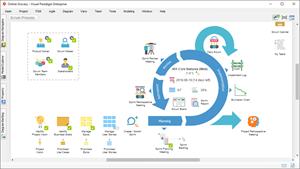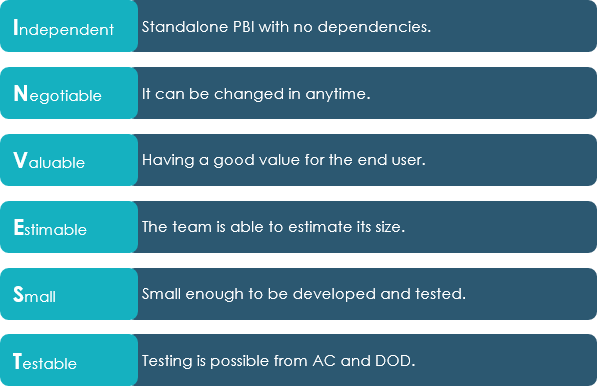SMART is a set of criteria for creating goals such as Sprint goals which is a short statement written by the Scrum team (based on the Product Owner’s initial objective) to lead them in the direction of what they want to accomplish. SMART stands for Specific, Measurable, Achievable, Relevant and Time-bound. Having goals written in a SMART format ensures that the goal-setter is clear on what they’re trying to accomplish, when and how.

Best Scrum Software Every Project Needs
A powerful scrum software that supports scrum project management. It features scrum tools like user story map, product backlog management, sprint backlog management, task management, daily scrum meeting, sprint planning tool, sprint review tool, sprint retrospective tool, burndown, impediment, stakeholder and team management.
Specific: when setting a goal, be specific about what you want to accomplish. Think about this as the mission statement for your goal.
Measurable: what metrics are you going to use to determine if you meet the goal? This makes a goal more tangible because it provides a way to measure progress. If it’s a project that’s going to take a few months to complete, then set some milestones by considering specific tasks to accomplish.
Achievable: This focuses on how important a goal is to you and what you can do to make it attainable and may require developing new skills and changing attitudes. The goal is meant to inspire motivation, not discouragement. Think about how to accomplish the goal and if you have the tools/skills needed. If you don’t currently possess those tools/skills, consider what it would take to attain them.
Relevant: This refers focusing on something that makes sense with the broader business goals. For example, if the goal is to launch a new product, it should be something that’s in alignment with the overall business objectives. Your team may be able to launch a new consumer product, but if your company is a B2B that is not expanding into the consumer market, then the goal wouldn’t be relevant.
Time bound: anyone can set goals, but if it lacks realistic timing, chances are you’re not going to succeed. Providing a target date for deliverables is imperative. Ask specific questions about the goal deadline and what can be accomplished within that time period. If the goal will take three months to complete, it’s useful to define what should be achieved half-way through the process. Providing time constraints also creates a sense of urgency.

The INVEST as a reminder of the characteristics of a good quality Product Backlog Item (PBI) (or user stories) commonly written in user story format. But what are characteristics of a good user story? The acronym “INVEST” can remind you that good stories should be:
A good user story should be – INVEST:

*AC (acceptance criteria) & DoD (Definition of Done)
| About Visual Paradigm |
 Visual Paradigm help organizations stay competitive and responsive to change faster and better in today’s fast changing environment. Our award-winning products are trusted by over 320,000 users in companies ranging from small business, consultants, to blue chip organizations, universities and government units across the globe. It enables organizations to improve business and IT agility and foster innovation through popular open standards and process frameworks.Visual Paradigm, a killer Agile feature in 2018, introduced Scrum Process Canvas for automating the way a Scrum team to create, manage and deploy software application that empowers the team to continuously improve their performance at unprecedented speed and scale. Visual Paradigm help organizations stay competitive and responsive to change faster and better in today’s fast changing environment. Our award-winning products are trusted by over 320,000 users in companies ranging from small business, consultants, to blue chip organizations, universities and government units across the globe. It enables organizations to improve business and IT agility and foster innovation through popular open standards and process frameworks.Visual Paradigm, a killer Agile feature in 2018, introduced Scrum Process Canvas for automating the way a Scrum team to create, manage and deploy software application that empowers the team to continuously improve their performance at unprecedented speed and scale.
Manage the Entire Scrum Process in One Page
|